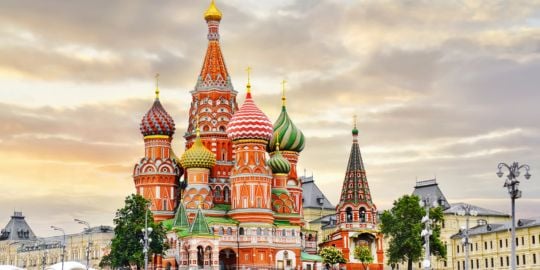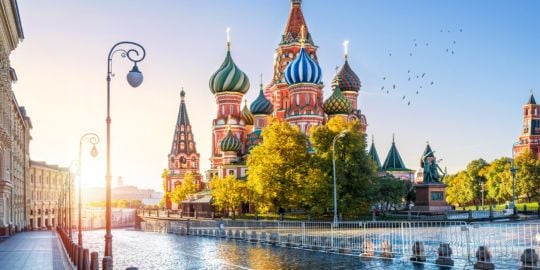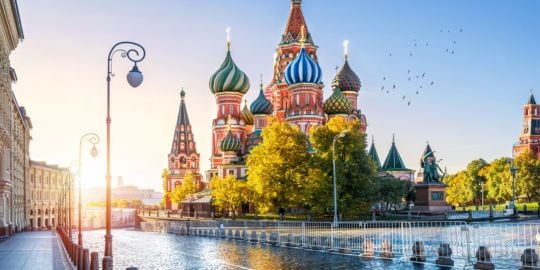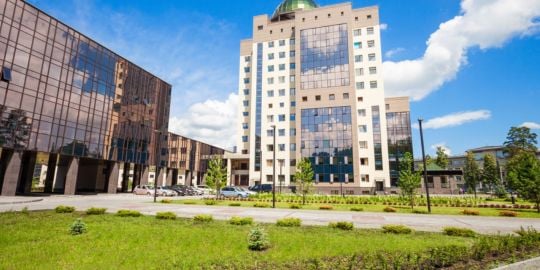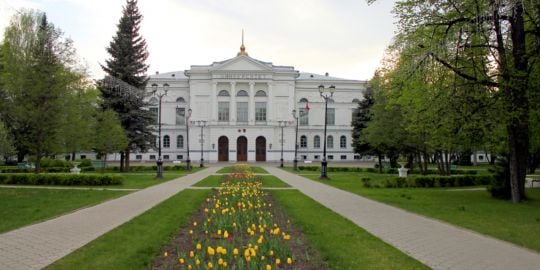Transport in Moscow
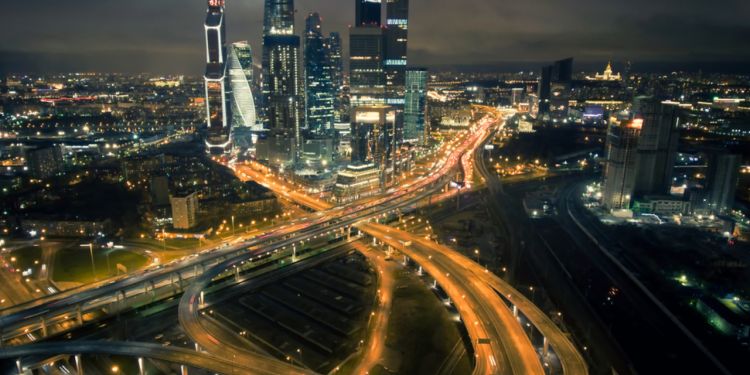
With a population of some 12.3 million inhabitants, Moscow is one of the most populated cities in Europe. It also attracts thousands of tourists every year due to its prosperous economy, as well as its rich historical and cultural heritage. As it a result, it has a developes and modernised transport network.
Indeed, the Russian capital city has an extensive transport network consisting of bus, subway, trains, tram, buses, etc., which will allow you to travel anywhere at affordable rates. You may also rent a car if you have a valid driver's license and knowledge of the Russian Highway Code.
Car
If you are planning to rent a car in Moscow, you will need an international driver's licence. You are also required to have the vehicle's documents and insurance certificate on board while driving. If you have moved to Russia with your car, you will also require a Russian customs document stating that you will leave the country along with your vehicle. This condition also applies to tourists.
Choosing to drive in Russia means that you will have to understand roads' poor conditions, the bad quality fuel available, the unreliable road signs, and - most of all - the Russians' specific way of driving. Like many official documents in Russia, driving licences are easy to buy and are often a cheaper option than sitting the exam. Therefore, many Russians drive their cars without even having sat the exam. Besides, most Russians believe that big SUVs are safer than small city cars, making it almost compulsory for other drivers to choose an SUV to hope to be on an equal footing on the road.
Attention:
In the event you are issued a fine by the police, settle it in Russian roubles and request a receipt.
Metro system
Moscow's metro is the world's fifth most used transport system in terms of trips made per day. Not only is it the most effective and fastest form of transport in the city, it is also a very pleasant and beautiful place to visit. It is open daily from 5am to 1am and 24h on New Years Eve, Moscow Day and during the 2018 FIFA World Cup. It is made up of 15 lines, 13 of which go through the centre to the outskirts and two are circular lines linking stations between themselves. Moscow's metro had 243 stations as of July 2017 and keeps expanding every year.
At most stations you can access trains travelling in both directions from a central platform, except at Kitai gorod, Tretyakovskaya and Partizanskaya. In order to make the metro accessible to blind people, each station is announced by a man's voice when the train goes toward the centre and by a woman's voice when the train travels away from the centre. Note that only a few recent stations have been equipped with lifts for people using wheelchairs and most stations are accessed by stairs.
If you speak Russian, you are likely to find your bearings quite easily in the metro. Unlike many European cities' metro systems, the ticket prices in Moscow do not vary according to the distance travelled. You can choose among various options : unlimited travel per 90 minutes; per 1, 3, 6 or 12 months; a single or two trips ticket; 10, 20 and 60 trip tickets. You can also place money on your 'troika' transport card that pays for travel on buses and other forms of transport.
Students in Russian universities and pensioners pay a set fee of 350 roubles per month for unlimited travel and are required to carry their student or pensioners's card which can be checked by the metro staff. Children under 5 can travel for free. Moscow's metro is very reliable and fast. During rush hour, trains arrive every 60 seconds and up to a maximum of 10-15minutes late in the evening. Finally, Moscow's metro is equipped with free wifi on all lines and some stations are equipped with chargers for smartphones.
Taxi
Those who prefer to travel by taxi may make an advance booking by phone or on the taxi company's website or smartphone app. Some taxis may charge you per kilometre while others will charge in terms of travel time or even at a set tariff (i.e. for airport trips). If you book via their app, a set fee will be suggested to you and you will be able to agree to it and order the taxi or to refuse it. Sometimes it is best to wait a few minutes to see the price drop.
Payment can be made in cash or by debit card if you booked via the app. There are many companies offering their taxi services on the market, all offering various deals and discounts to regular smartphone app users. This has had a significant influence on prices: in favour of the clients. Incidents such as kidnappings of foreigners in unofficial taxis have taken place as recently as last winter and you are highly advised to be very careful when using this kind of taxi on your own or even with people you know.
Bus
A lot of Muscovites prefer to travel by bus for their everyday journeys. You may choose from some 660 lines and around 5,700 buses to travel on anywhere around the city. You will also find facilities for disabled people as well as a satellite system and air conditioning.
Most bus routes in Moscow are available from 5am until 1:30am the next morning and some main lines in the city centre work 24h. If you do not have a transport card ('troika'), you will have to purchase a ticket from the bus driver. You will need 55 Russian roubles for a single trip.
Commuter trains
Moscow also hosts a network of commuter trains called 'elektritchki'. This network, which includes 88 stations, stretching over 190 km of rail, connects the following neighborhoods: Kiev, Riga, Kazan, Gorky Paveletskaya, Saviolovo, Yaroslavl, Ryazan Kourks, Smolensk and Paveletskaya. Note that all commuter train stations are connected to the metropolitan network. Hence, you may continue your trip peacefully.
Tickets can be purchased at vending machines which are available at train stations. Rates generally vary according to different destinations.
Good to know:
The Aeroexpress, which is a high speed line, connects the city's central neighborhoods to Moscow's three major airports.
Monorail
Ulitsa Sergei Eisenstein, Timiriazevskaïa, Ulitsa Milachenkhova, Teletcentre, Ulitsa Akademika Koroliova, Vystavotchny centre, which are found in the Northern district, are served by the monorail system. This train starts to operate as from 7 am and is available till 11 pm.
Tram
Moscow's tram network consists of 42 lines and some 860 old tramways. These will not only take you to outlying areas via lines A and B, bus also to the Taganka neighborhood via line B.
Trolleybus
Moscow has the world's largest trolleybus system, covering some 600km. The system consists of 90 lines with around 1,500 vehicles.
Shuttle minibus
If you want to go to a particular place, without having to use several buses and trams, etc., you can travel by shuttle minibuses which are available throughout the city. These generally follow the same routes as buses. However, you may have to pay according to the distance you travel and there are times when there is no fixed schedule, meaning you could be waiting for a long time. Generally, shuttle minibuses ('marshrutki') are available from 5am until midnight. Rates vary according to different destinations and are to be paid on board. From 2017 you may also use public transport cards on board for many 'marshrutki'.
Useful links:
MSK Rusavtobus - Bus network
Taxi Blues
Minibus shuttle
RZD - Russian Railways
